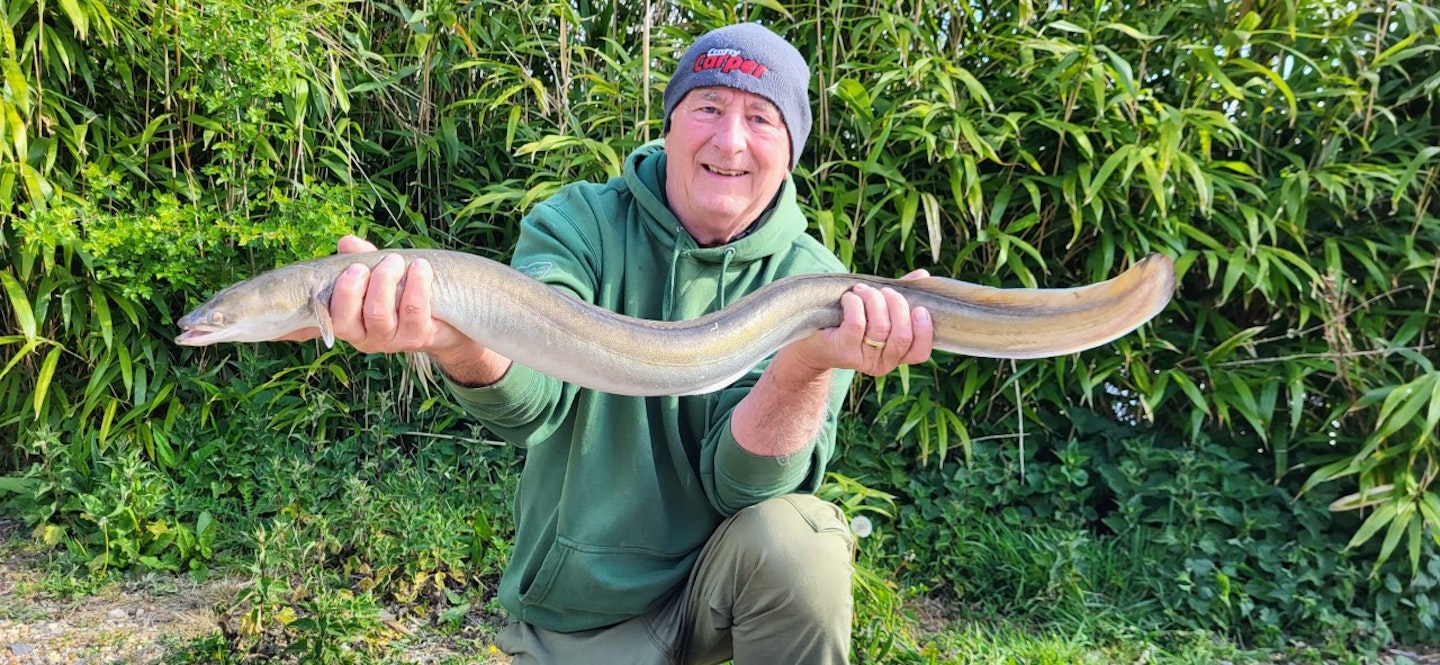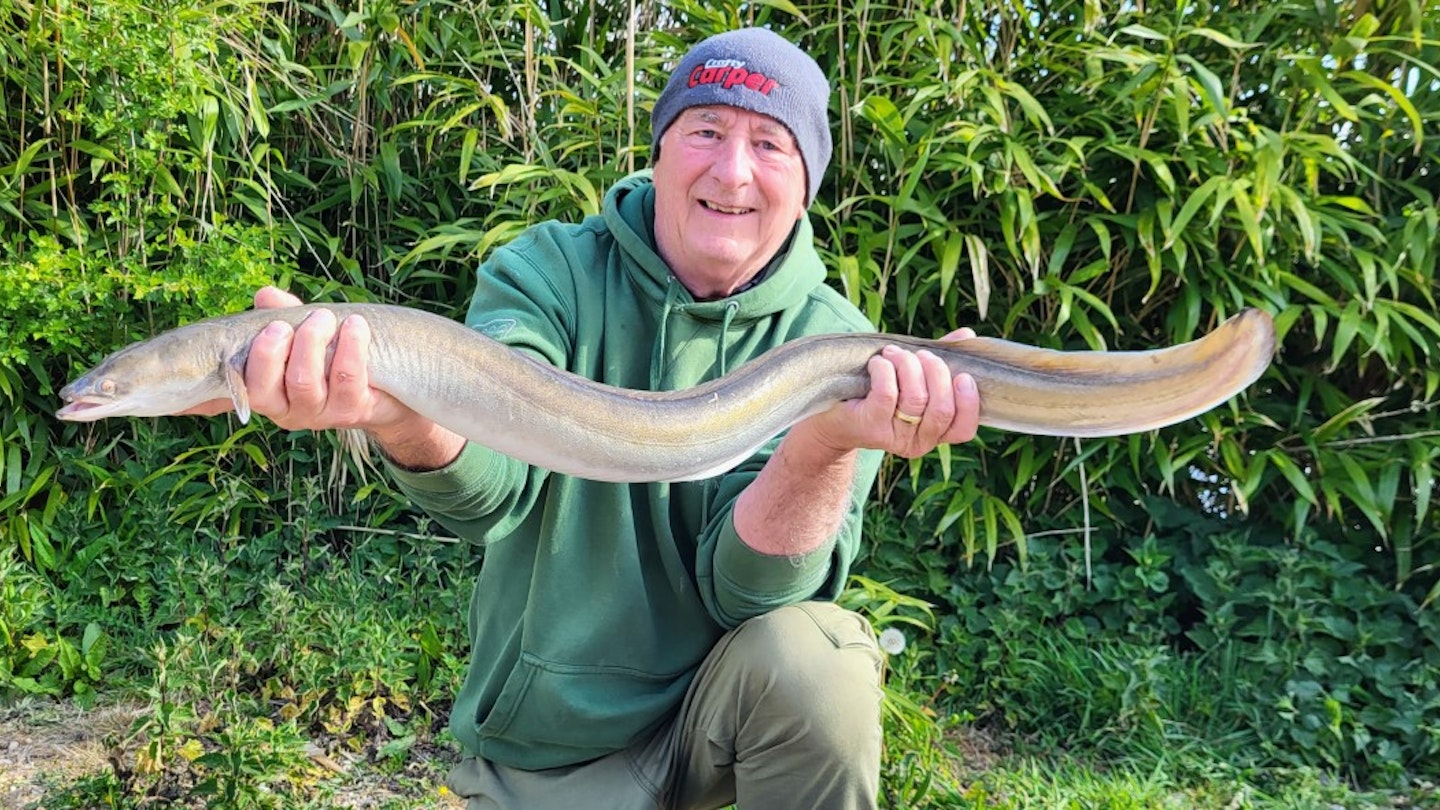“I love fishing for eels – they’re such a fascinating species. When you’re catching, it can seem easy, but when you’re struggling, it feels like the odds are completely stacked against you.
“But, in fishing, making the smallest change to your approach can make a big difference, and on a recent trip that’s exactly what happened. By adjusting the length of my hair rigs by just 2ins I put an end to the missed runs I was suffering, and ended up having a great session.
“When targeting eels, the last thing you want to do is deep-hook fish, which is why I use hair rigs. It surprises me how few people use them for eels, but I’ve found that nine out of 10 of the fish I land are hooked in the mouth when using them.
“I live in Wiltshire, and in my neck of the woods there are several campsites with small ponds that offer great fishing. I was on one of these waters the other day.
“I’ve had good eels to over 6lb there in the past, but on this trip I was having problems with missed runs. I was using a mix of baits – one rod had a worm and prawn cocktail, the other a few bits of fresh fish. On both, I’d get good takes, but couldn’t connect. I quickly realised this was probably down to the length of my hair, so I shortened it from 4ins to 2ins.
“From then on, I didn’t look back, and landed half-a-dozen eels, including a few four-pounders and this cracking 5lb 2oz fish. I also managed a surprise 20lb 8oz pike – an immensely long fish that’d be far heavier in winter.

“As I said before, my main aim when eel fishing is to avoid deep-hooking them, and the rest of my set-up reflects this. I use 1.5oz free-running leads and fish pretty tight lines with the reel’s bail-arm closed. This means I know right away when a fish takes and, on the session in question, the majority of my fish were hooked cleanly in the bottom lip, with just a few hooked inside the mouth. None had swallowed the bait, which I was really pleased about.
“I use a very fine wire trace as a hooklink, in 10lb breaking strain. Not only does this stop you being bitten off, it also avoids you leaving tackle in any pike that gate-crash the party. I’ll usually have this between 8ins-10ins long, just so it’ll sit cleanly on the silt if the lead becomes buried. A strong size 4 hook completes the set-up.
“I’d advise anyone who wants to target eels to give a set-up like this a go. Start with a 4ins hair, and if you’re missing bites, keep shortening it until you connect.
“These fish are notoriously difficult to target, but there are a few things I’ve discovered when fishing these small, intimate ponds that can tilt the odds in your favour. The eels seem to live in the silt, and I’ve found that targeting the middle of the lake – ‘no man’s land’ if you’re a carper – is the best option. On these venues you can take full advantage of the eel’s amazing sense of smell, and draw them to you with small amounts of feed. I introduce a few pieces of chopped fish with a catapult, as well as some chopped worms and prawns. The aim isn’t to feed the fish, just draw them in, where they’ll find my hookbait.
“The bites came 50:50 on both hookbaits, which showed it’s worth trying a mix of things. On another night, or venue, one could have outscored the other.
“With the warm weather finally here and carp likely to be spawning, why not give eels a go? They’re a brilliant fish to target and fight hard! I had one the other season that was nearly ready for netting. With a burst of speed, it climbed over the net, out of the water and on to the bank before jumping back in and breaking the line! They’re unlike any other freshwater species!”

